- There are no more items in your cart
- Shipping Calculated at checkout
- Sub-Total (inc. VAT) £0.00
Need Help?
Electrical and Lighting
Buy fire protection for electrical and lighting in your home or business, at Rawlins Paints. Our range includes cover and inserts to retrofit protection to light fittings and electrical sockets that compromise the fire rating of walls, ceilings, or floors. View the full firestopping range, here.
If you require more help to find and specify fire protection for your project or contract, our technical team are always on hand to advise. Give us a call on 0113 2455450 (option 2) or send a message to [email protected].
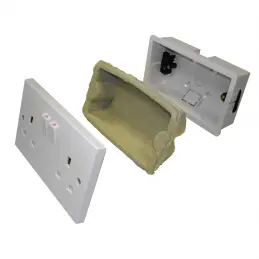
Astroflame Fire & Acoustic Internal Socket Box Insert
Restore the fire rating of a wall otherwise compromised by apertures and gaps following the fitting of socket boxes, also restoring acoustic and thermal performance of the wall and its air-tightness.Easy to install putty pad alternative Single and Double socket sizes available Tested to BS EN 1366-3 for up to 120 mins Provides an...
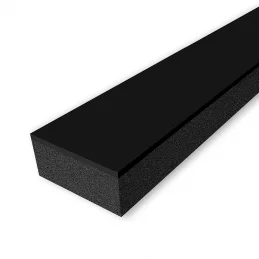
Nullifire FP333 Trunking Infill
Provides a permanent fire barrier within trunking boxes passing through fire compartment walls. They are of particular use where there are regular changes in cabling requiring frequent removal and replacement, for example in computer or communication installations.Up to 2 hours fire performance Tested en BS EN 1366-3 Integrity, insulation...
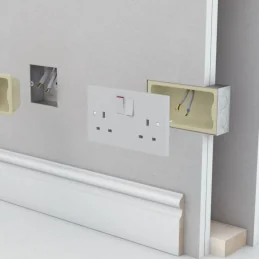
Tenmat FF130 Electrical Box Inserts
Designed to maintain the fire resistance performance of fire rated partition (stud) wall constructions where electrical back boxes have been installed.BS EN 1366-3 Fire Tested Fire Ratings of EI30, EI60, EI90 and EI120 Tested in Single Layer & Double Layer Partition Systems Tested in 75mm thick walls and greater Tested in “Twin...
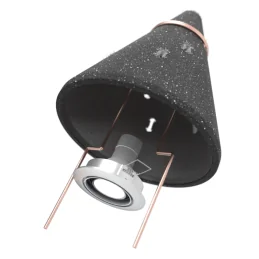
Tenmat FF109 Downlight Covers
Designed to reinstate the fire resistance performance of ceilings and/or floor joist constructions where downlighters have been installed.A fire rated product, reinstating ceiling fire protection up to 120 minutes Tested for minimal acoustic noise transfer, ideal for multi-home buildings Ventilated design – developed to reduce heat...
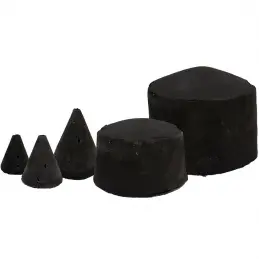
Astroflame Intumescent Down Light Covers
Developed to cover maximum protection for holes created by the introduction of a downlighter and to allow for maximum ease of fitting.Downlight Fire Hoods fire rated to BS EN 1365-2:2000 / BS476 Part 23:1987 30 or 60 minute fire rating Covers a wide range of mains & low voltage downlighters Choice of 5 sizes Provides a highly...
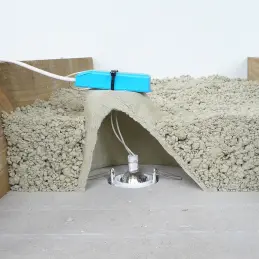
Astroflame Fire Rated Loft Cone
Designed to provide a fire resistant solution and overcome thermal and vapour transmission into loft voids when installing recessed lights. The 'F-capped' Approved Loft Cone maintains sufficient space around the fitting to allow continuous insulation to be laid directly over light fittings minimising overheating or fire risk.F-Capped...
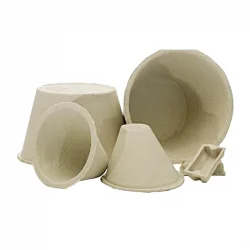
Tenmat Loft Covers
Downlight protection covers that enable the safe installation of recessed downlights under loose or rolled loft/attic insulation.ECO Loft Insulation Compliant Tested to meet the CITB “General requirements and guidance for the installation of cold roof loft insulation” Meets Electrical Safety First recommendations IP6X Dust Tight Tested...
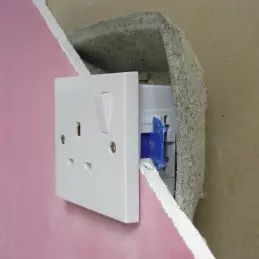
Astroflame Intumescent Fire & Acoustic Socket Box Covers
A pre-formed socket / switch box cover to provide fire and acoustic protection as an easy fit alternative to conventional putty pads. This one-piece socket box is available in sizes to suit most common single & double electrical boxes and restores and maintain fire insulation and integrity in plasterboard walls for up to 120 minutes....
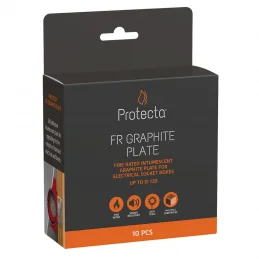
Protecta FR Graphite Plate
Single-component, self-adhesive intumescent plate designed to reinstate fire resistance in walls punctured by socket boxes. Suitable for flexible wall constructions with a minimum thickness of 75mm, including timber and steel noggins. Provides up to 120 minutes of integrity and insulation fire resistance. Expands under heat to seal socket...
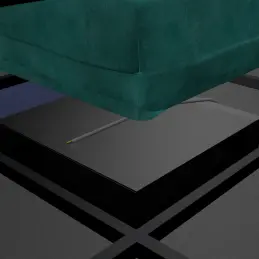
Astroflame Fire Rated Luminaire Canopy
Stops the passage of fire and smoke, for up to 60 minutes, through luminaire light fittings in a fire rated ceiling. Without the fire rated canopy in place, fire and smoke will penetrate the recessed light fitting in seconds and spread into the void or room above endangering lives and property.Fire Rated Luminaire Canopy (Fire Hood)...

SikaSeal-632 Ablative Pads
Designed to be used on the inside or outside of electrical back boxes to maintain fire and smoke barrier where service holes are cut into dry lining and all types of fire rated boarding.Sika now offer a Fire Stopping Solution Finder - a useful tool when needing assistance on specifying fire stopping solutions Double and single-sizes...
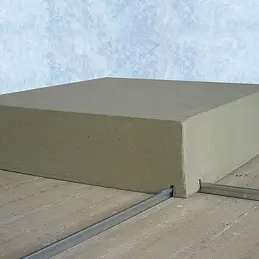
Astroflame Fire Rated Luminaire Cover
Developed to provide maximum protection for ceilings where fire resistant tiles have been replaced by light fittings. Designed to allow for ease of fitting, it is self locating and cannot be fitted incorrectly. The cover also gives additional insulation protection to the ceiling void reducing the chance of ignition of accumulated dust and...
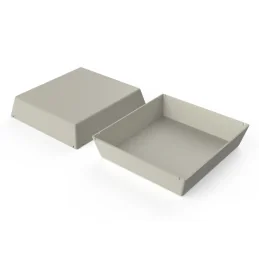
Tenmat FF130 Luminaire Covers
Fire rated covers or fire canopies designed to fire rate recessed luminaire or fluorescent module fixtures and reinstate the performance of ceilings when penetrated by recessed lights. They help to maintain the fire protection performance of the element protected by the ceiling - preventing or delaying the spread of fire.60 Minutes Fire...
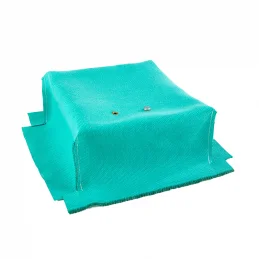
Firefly Fire Hood & Downlight Covers
Designed to provide fire protection over the recessed luminaire or downlight in a fire rated ceiling. In the event of a fire the Fire Hood or Downlight Covers will delay the progress of fire and smoke travelling through a ceiling, thereby providing precious time for occupants to safely exit the building and emergency services to minimise fire...
Need Help?
Need Help?
Both socket box inserts and downlight covers are integral components in maintaining the fire safety of buildings, ensuring that electrical and lighting installations do not compromise the effectiveness of fire-rated barriers. These products are essential for compliance with building regulations and for ensuring the safety of occupants in the event of a fire.
Socket Box Inserts
Purpose and Need:
- Socket box inserts are used to maintain the fire integrity of walls or partitions when electrical socket outlets are installed. Cutting holes into fire-rated walls for sockets creates potential weak points where fire and smoke could penetrate, compromising the wall's overall fire resistance. Socket box inserts address this vulnerability by sealing the socket area, restoring the wall's ability to resist fire.
Material Composition and Mechanism:
- Socket box inserts are typically made from intumescent materials. Intumescent materials are reactive to heat; when exposed to temperatures typically around 200°C or higher, they expand significantly. This expansion process fills any gaps around the socket, creating a dense, insulating barrier that prevents fire and smoke from spreading through the socket box.
- The intumescent material not only seals the perimeter of the socket box but also fills any cavities within the box itself, ensuring that no direct or indirect pathways remain for the fire to exploit.
Installation:
- Socket box inserts are designed to be easily installed during the electrical installation phase. They are placed behind the electrical socket within the wall cavity. Some designs are pre-formed to fit standard socket sizes, while others may be customizable to accommodate various configurations.
- Proper installation is crucial, as gaps or improper fitting can reduce the effectiveness of the insert in a fire situation. The insert must cover all potential gaps around the socket box fully, strictly following the manufacturer's guidelines to ensure that installation is correct and inline with testing.
Testing and Standards:
- Socket box inserts must be tested to meet the fire resistance requirements stipulated by building codes, typically measured in minutes of fire resistance (e.g., 30, 60, 90, or 120 minutes).
- The performance of socket box inserts is often verified through rigorous fire testing, simulating the conditions they would face during an actual fire. These tests assess the insert's ability to maintain the integrity of the fire barrier under high temperatures and direct flame exposure.
Applications:
- Socket box inserts are used in a variety of settings, including residential, commercial, and industrial buildings. They are especially important in buildings where maintaining fire compartmentation is critical, such as multi-occupancy residences, hospitals, and schools.
Downlight Covers
Purpose and Application:
- Downlight covers, also known as fire hoods, are designed to restore the fire resistance of a ceiling that has been compromised by the installation of recessed downlights. Cutting holes into fire-rated ceilings for these lights creates gaps through which fire can spread from one compartment to another.
- The covers are crucial in buildings where ceilings are part of a fire-rated floor/ceiling assembly, such as in multi-storey buildings or where there is a need to protect the space above the ceiling (e.g., an attic or another room).
Material Composition and Operation:
- Like socket box inserts, downlight covers are made from intumescent materials that react to heat by expanding. When a fire occurs, the downlight cover expands to fill the space around the light fitting, sealing off the hole in the ceiling and preventing the passage of fire and smoke.
- These covers are designed to withstand the high temperatures of a fire and maintain their integrity long enough to meet the required fire rating of the ceiling (e.g., 30, 60, or 90 minutes).
Installation:
- Downlight covers are installed over the downlight from above the ceiling. They are generally easy to fit and do not require any special tools, making them suitable for retrofitting as well as new installations.
- It is important that the cover fits snugly over the downlight, without any gaps, to ensure that it provides the necessary level of protection.
Testing and Standards:
- Downlight covers are tested according to fire resistance standards relevant to the building regulations in the UK and Europe. The testing involves subjecting the cover to conditions that replicate those of a fire to verify that it can maintain the ceiling's fire resistance for the required duration.
- These products must also be compatible with the specific type of downlight used, ensuring that the light fitting itself does not compromise the cover's effectiveness.
Performance Considerations:
- In addition to fire resistance, downlight covers must also account for heat dissipation from the light fitting. Overheating could occur if the downlight is not properly ventilated, so fire-rated downlight covers are often designed to allow for sufficient airflow while still providing the necessary fire protection.
- The compatibility with LED, halogen, or other types of downlights must also be considered, as different types of lighting may have varying heat outputs and installation requirements.
Applications:
- These covers are commonly used in residential and commercial buildings where downlights are installed in fire-rated ceilings. They are particularly important in settings where maintaining the integrity of fire compartments is critical, such as in office buildings, hotels, and apartment complexes.
Passive Fire Protection for Electrical and Lighting
Passive Fire Protection
Definition and Role: Passive fire protection refers to the built-in measures that prevent or slow the spread of fire within a building, particularly through its structure and systems, including electrical and lighting components. These measures are crucial for containing fires within specific areas, limiting damage, and ensuring safe evacuation.
Key Components for Electrical and Lighting:
1. Penetration Seals for Electrical Systems:
- When electrical cables for sockets and downlights pass through fire-resistant walls or floors, penetration seals are essential to maintain the fire integrity of these barriers. These seals prevent the spread of fire and smoke through openings around cables, ensuring that the compartmentation is not compromised.
- Different types of walls (e.g., solid block vs. dry cladding systems) require specific types of penetration seals, and these must be tested for compatibility with the building's construction materials.
2. Fire-Resistant Service Ducts and Shafts:
- Electrical wiring often runs through service ducts and shafts within buildings. These ducts must be fire-resistant to prevent the fire from spreading along the path of the cables, which could otherwise compromise multiple areas of the building.
- The ducts and shafts must meet the same fire resistance requirements as the compartments they pass through, maintaining the structural fire integrity.
3. Fire-Resistant Downlight Enclosures:
- Downlights installed in ceilings can compromise the fire resistance of the ceiling unless they are enclosed in fire-rated enclosures. These enclosures are designed to maintain the fire integrity of the ceiling, ensuring that the downlight does not become a weak point in the fire compartmentation.
- The enclosures work by containing the fire within the ceiling void, preventing it from spreading to adjacent compartments through the downlight openings.
Building Performance: Fire Resistance and Compartmentation
Fire resistance and compartmentation are critical components of fire safety, particularly in buildings where electrical and lighting systems are involved. These elements ensure that fires are contained within specific areas, limiting their spread and allowing safe evacuation and effective firefighting.
Fire Resistance
Fire resistance refers to the ability of a building's structural elements, including those involved in electrical and lighting systems, to withstand the effects of fire for a specified period. This is crucial in preventing the collapse of structures and in maintaining the integrity of fire compartments.
- Load Bearing Capacity: The structural components that support electrical systems, such as conduits and cable trays, must maintain their load bearing capacity during a fire. For example, steel supports for electrical installations can lose significant strength at high temperatures, potentially leading to the failure of the electrical system's structural integrity. Passive fire protection measures, such as fire-resistant coatings, are often applied to these components to extend their fire resistance.
- Integrity: Integrity in fire resistance ensures that no significant gaps or openings develop during a fire, which could allow hot gases, smoke, or flames to pass between compartments. This is particularly important where electrical cables penetrate walls or floors. These penetrations must be sealed with fire-stopping materials that maintain the integrity of the fire compartment for the required duration. Without proper sealing, fire can easily spread through these openings, compromising the safety of the entire building.
- Insulation: Insulation refers to the ability of a building element to prevent the transfer of heat through it during a fire. For electrical and lighting systems, this means ensuring that the external surfaces of cables and conduits do not reach temperatures that could ignite surrounding materials or compromise the functionality of the electrical system. This is critical in preventing fire spread and ensuring that electrical systems do not contribute to the escalation of the fire.
Compartmentation
Compartmentation involves dividing a building into separate fire-resistant compartments to prevent the spread of fire and smoke. This is particularly relevant to electrical and lighting systems that often run throughout a building, penetrating multiple fire compartments.
- Fire-Stopping in Electrical Systems: Where electrical cables and conduits pass through compartment walls or floors, fire-stopping systems are essential. These systems typically involve the use of fire-resistant materials that seal the gaps around these penetrations, ensuring that the compartment's integrity is not compromised. Different fire-stopping solutions may be required depending on the type of wall or floor construction. For instance, a solid block wall may require a different fire-stopping method than a dry cladding system. It is crucial that these fire-stopping systems are tested and proven to perform effectively under fire conditions.
- Maintaining Fire Compartment Integrity: In addition to sealing penetrations, it is important to consider the potential for fire spread through concealed cavities where electrical installations may be present. Proper fire-stopping measures must be in place to prevent lateral and vertical fire spread within these cavities. This includes the use of intumescent or fire-resistant sealants that expand when exposed to heat, sealing off any gaps and preventing fire from bypassing the compartmentation measures.
Relevant Standards and Testing
Ensuring the fire resistance and compartmentation of electrical and lighting systems involves adhering to specific standards and testing protocols. These standards define the required fire resistance ratings for different building elements, including those that house or protect electrical systems.
- Testing of Fire-Stopping Systems: Fire-stopping systems used in electrical installations must be tested under conditions that simulate real fire scenarios. These tests evaluate the system's ability to maintain integrity, insulation, and load bearing capacity under fire exposure. The results of these tests are used to certify that the fire-stopping solutions will perform as expected in actual fire conditions.
- Compliance with Fire Codes: Building codes and regulations specify the required fire resistance ratings for different elements of a building, including those related to electrical and lighting systems. Compliance with these codes is essential to ensure that the building's fire protection measures are adequate and effective. This includes using certified fire-resistant materials and systems in the construction and installation of electrical systems.
Fire resistance and compartmentation (in the context of electrical and lighting systems) are essential for maintaining the safety and integrity of a building during a fire. These measures prevent the spread of fire and smoke, ensure the structural stability of the building, and protect the occupants by providing safe evacuation routes. Proper testing, certification, and adherence to fire safety standards are crucial to the effectiveness of these fire protection strategies.
Fire Testing, Assessment, and Certification:
Fire Testing and Assessment
1. Testing of Fire Protection Products:
- Any material, product, or system used in fire protection, including those in electrical and lighting systems, must undergo fire testing appropriate to its intended use. This testing evaluates how the product will perform in real-world fire conditions. For example, cables passing through fire compartments need to be tested to ensure that they do not compromise the integrity of the compartment under fire conditions.
- The testing process often includes a physical test of the product under controlled conditions, followed by an assessment that identifies the environments in which the product can be used. The assessment also details any limitations, ensuring the product is only used in scenarios where it has been proven effective.
2. Importance of End-Use Conditions:
- The performance of fire protection systems, particularly those involving electrical and lighting installations, depends significantly on the conditions in which they are installed. For example, the method used to seal a cable passing through a solid block wall may differ from that used in a dry cladding system. Both scenarios need to be tested separately to ensure the fire stopping system performs effectively in each condition.
3. Limitations of Testing:
- It is impractical to test every possible configuration of a fire protection system in every conceivable scenario. Therefore, a combination of physical testing and expert assessments is used to extend the applicability of test results to broader conditions. This approach is particularly relevant for electrical and lighting systems, where various configurations and materials might be used.
Product Certification
1. Types of Certification:
- Certification provides a level of assurance regarding the performance of fire protection products. For electrical and lighting systems, certification ensures that products meet the necessary fire safety standards and can be relied upon in case of a fire. There are three main types of certification:
- First-party certification: Provided by the manufacturer, asserting that their products meet specified claims.
- Second-party certification: Offered by an association to which the manufacturer belongs.
- Third-party certification: An independent certification body, often accredited by a national authority like the United Kingdom Accreditation Service (UKAS), evaluates the product. This type is the most reliable and is increasingly required in construction projects.
2. Third-Party Certification Process:
- The third-party certification process involves a thorough evaluation of the product's performance across a range of tests. For electrical and lighting systems, this might include tests on cable insulation, fire-resistant enclosures, and other components.
- The certification body also conducts factory inspections to ensure consistent product quality. This ongoing verification process is crucial in maintaining the reliability of fire protection products over time.
3. Relevance for Electrical and Lighting Systems:
- For systems like electrical wiring, which often pass through multiple fire compartments, the certification ensures that these systems do not compromise the fire safety of the building. The certification process verifies that the products used in these systems have been tested and proven to perform under the conditions they are likely to encounter during a fire.
4. Assessment and Expert Judgement:
- Where full-scale testing is not feasible, expert assessments and judgments fill the gaps. These assessments are typically conducted by accredited fire test laboratories or qualified fire consultants, who evaluate the performance of products based on available test data. For electrical and lighting systems, these assessments help determine the suitability of products for specific applications and configurations.
- It is essential that these assessments are conducted by qualified professionals to ensure the validity and reliability of the conclusions, particularly given the critical role of electrical systems in fire safety.
Fire Test Reports
1. Use of Fire Test Reports:
- Fire test reports are commonly used to demonstrate the fire performance of electrical and lighting products. However, these reports are specific to the product as tested and do not account for variations in installation or use. Therefore, while they are valuable, they are not as comprehensive as full third-party certification.
- The complexity of these reports can make them difficult for non-specialists to interpret, which is why third-party certification is often preferred for ensuring compliance with fire safety regulations.
The fire testing, assessment, and certification processes are integral to ensuring that electrical and lighting systems in buildings meet stringent fire safety standards. These processes involve rigorous testing under controlled conditions, expert assessments to extend the applicability of test results, and third-party certification to provide ongoing assurance of product performance. This ensures that these systems do not compromise the fire safety of buildings and contribute effectively to the overall fire protection strategy.
FAQs
Socket Box Inserts
What is the purpose of a socket box insert?
Socket box inserts are designed to maintain the fire resistance of walls where electrical sockets are installed. They prevent fire and smoke from spreading through the gaps around electrical sockets by sealing the area when exposed to high temperatures.
How do socket box inserts work?
Socket box inserts are made from intumescent materials that expand when exposed to heat. This expansion fills the gaps around the socket box, creating a barrier that helps to maintain the fire integrity of the wall.
Are socket box inserts easy to install?
Yes, socket box inserts are easy to install during the electrical installation process. They are placed behind the electrical socket within the wall cavity and are designed to fit standard socket sizes - always refer to the manufacturer's installation guidelines.
Do socket box inserts need to be tested to specific standards?
Yes, socket box inserts must be tested to relevant fire resistance standards to ensure they provide adequate protection. They are typically tested to withstand specific fire resistance ratings, such as 30, 60, or 90 minutes.
Can socket box inserts be used in any type of wall?
Socket box inserts are designed for use in fire-rated walls. However, their suitability may vary depending on the wall construction type and the specific fire resistance requirements of the building.
Downlight Covers
What are downlight covers and why are they needed?
Downlight covers, also known as fire hoods, are used to restore the fire resistance of ceilings where recessed downlights are installed. They prevent fire and smoke from spreading through the openings created for downlights, maintaining the ceiling's fire integrity.
How do downlight covers work?
Downlight covers are typically made from intumescent materials that expand when exposed to heat, sealing the area around the downlight and preventing fire from passing through the ceiling. This helps to contain the fire within a single compartment.
Are downlight covers compatible with all types of downlights?
Downlight covers are generally compatible with various types of downlights, but it is essential to choose a cover that is designed for the specific type of downlight being used, such as LED or halogen. Ensuring compatibility is crucial for both fire safety and proper heat dissipation.
How are downlight covers installed?
Downlight covers are installed from above the ceiling, fitting over the downlight. They are designed for easy installation, typically without the need for special tools, making them suitable for both new installations and retrofits.
Do downlight covers affect the heat management of the downlights?
Downlight covers are designed to allow sufficient airflow around the light fitting to prevent overheating. However, it is important to ensure that the chosen cover is appropriate for the specific downlight to maintain safe operating temperatures while providing the necessary fire protection.
What fire ratings do downlight covers provide?
Downlight covers are tested to provide specific fire resistance ratings, typically ranging from 30 to 90 minutes, depending on the product and the ceiling’s fire rating requirements. It is important to select a downlight cover that matches the required fire rating for the installation.
